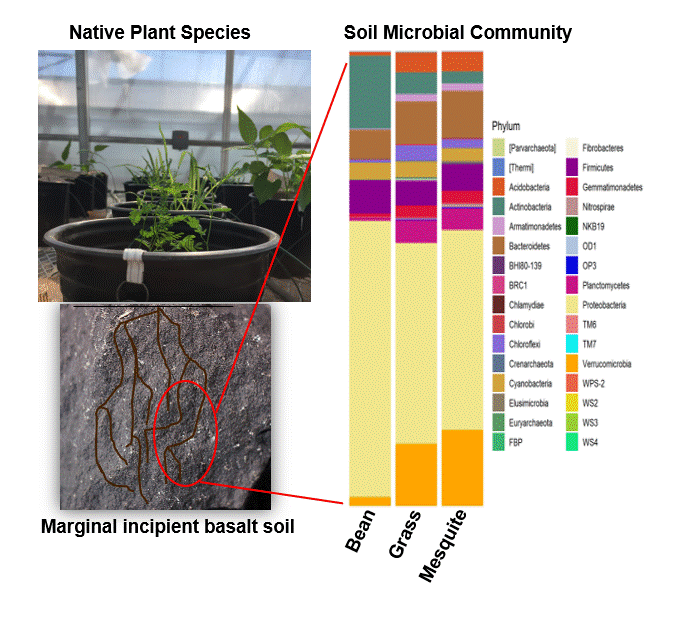The plant-microbe-soil nexus is critical in maintaining biogeochemical balance of the biosphere. However, soil loss and land degradation are occurring at alarmingly high rates, with soil loss exceeding soil formation rates. This necessitates evaluating marginal soils for their capacity to support and sustain plant growth. In a greenhouse study, we evaluated the capacity of marginal incipient basaltic parent material to support native plant growth, and the associated variation in soil microbial community dynamics. Three plant species, native to the Southwestern Arizona-Sonora region were tested with three soil treatments including basaltic parent material, parent material amended with 20% compost, and potting soil. The parent material with and without compost supported germination and growth of all the plant species, though germination was lower than the potting soil. A 16S rRNA amplicon sequencing approach showed Proteobacteria to be the most abundant phyla in both parent material and potting soil, followed by Actinobacteria. Microbial community composition had strong correlations with soil characteristics but not plant attributes within a given soil material. Predictive functional potential capacity of the communities revealed chemoheterotrophy as the most abundant metabolism within the parent material, while photoheterotrophy and anoxygenic photoautotrophy were prevalent in the potting soil. These results show that marginal incipient basaltic soil has the ability to support native plant species growth, and non-linear associations may exist between plant-marginal soil-microbial interactions.

